Pranab Mukherjee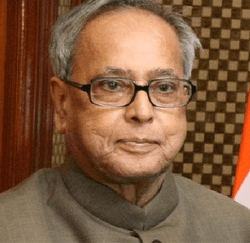
In India, the President is regarded as the Republic of India's head of state. He or she is the ceremonial head of the executive and Commander-in-Chief of the Indian Armed Forces. The President's office was established in India when the constitution came into force in 1950. Since then, the President has been elected indirectly by an electoral college, which consists of both houses of Parliament and the lower House of each state, as well as territories, which are all directly elected by the people. The President of India is authorized by Article 52 of our constitution. Since the constitution's foundation, India has had many presidents. For his services to India, each President is remembered warmly. Today, we shall discuss our beloved ex-President of India, Shree Pranab Kumar Mukherjee, in this piece of writing. Birth and deathPranab Mukherjee was born in the state of West Bengal on December 11, 1935. He rose from anonymity to become a well-known politician and a patriotic government official, serving as President of India from 2012 to 2017. He became President after succeeding Pratibha Patel, India's first female President, who served from 2007 to 2012. He died on August 31, 2020, at the age of 84, and went to the celestial home. FamilyPranab Mukherjee is from a Bengali family of Kulin Brahmins. His father (Kamada Kinkar Mukherjee) was heavily involved in India's campaign for freedom from British control throughout the first half of the twentieth century, even before India's independence. His father was a member of the Indian National Congress for a long period. He was even imprisoned and held for some years for protesting British control. His father was a member of the West Bengal state legislature (1952-1964) when India gained independence. 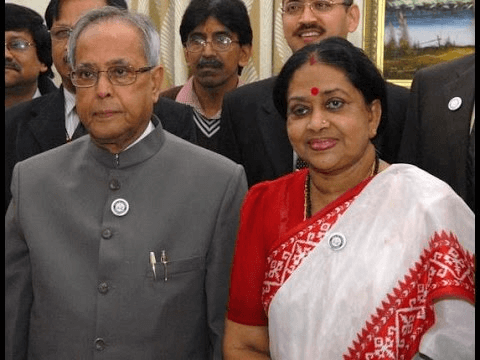
Rajlakshmi Mukherjee, his mother, was also a freedom fighter against British authority. Pranab Mukherjee also had four sisters and an older brother. On July 13, 1857, Pranab Mukherjee married Surva Mukherjee, and the family had two boys (Abhijit Mukherjee and Indrajit Mukherjee) and a daughter (Sharmistha Mukherjee, who is a trained Kathak dancer and a politician of INC) together. Surva Mukherjee, his wife, died in 2015 while he was at work owing to heart difficulties. 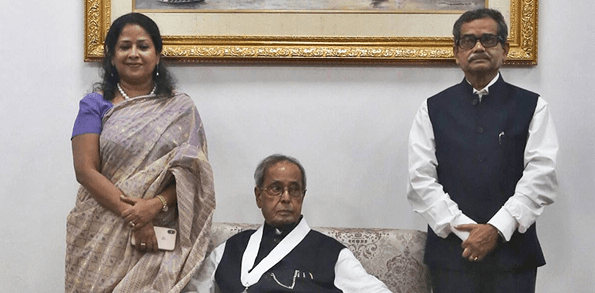
Early LifePranab Mukherjee, our former President, had his education from Suri Vidyasagar College, which was affiliated with the University of Calcutta at the time. Later, he received an advanced degree in history and political science from the university, as well as a legal degree. He worked in Calcutta's Office of the Deputy Accountant-General (Post and Telegraph) as an upper-division clerk. 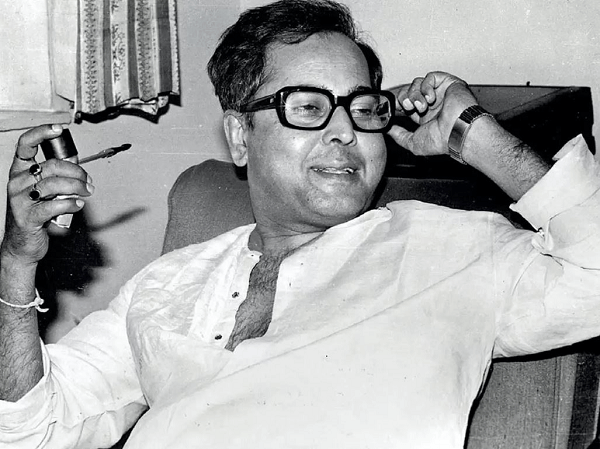
In 1963, he began his teaching career as an associate professor for political science at a small institution named Vidyanagar College near Kolkata that was affiliated with the University of Calcutta. He went on to work as an editor for a Bengali-language monthly magazine and then for a weekly journal. Career in PoliticsMukherjee entered politics in 1967 as a founding member of the Bangla Congress. He was instrumental in creating the United Front coalition to fight the Indian National Congress before the 1967 election. He successfully led the independent candidate V. K. Krishna Menon's campaign for the 1969 Midnapore by-polls. On a Bangla Congress candidacy, he was elected to the Rajya Sabha in July 1969. In a short time, Pranab became the private intermediary of communication between Ajoy Mukherjee and Indira Gandhi. In addition to incorporating the Bangla Congress into the party, Indira Gandhi welcomed him to the Indian National Congress in 1972. 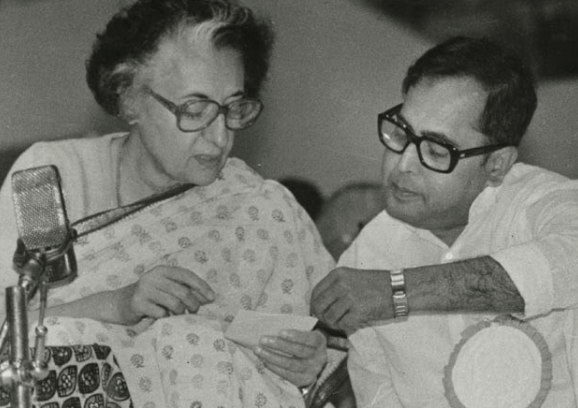
He became Gandhi's devoted supporter and was frequently referred to as her "man for all seasons." Initially in his career, Mukherjee rose quickly, and in Indira Gandhi's government, he was named Union Deputy Minister of Industrial Development in 1973. During the contentious Internal Emergency of 1975-1977, he participated actively in the Indian Cabinet. Mukherjee and other lawmakers from the then-dominant Congress party were charged with abusing extraconstitutional authority to "destroy established norms and principles of government." Shah Commission, established by the Janata administration after Congress lost the power in 1977, charged Mukherjee; however, in 1979, the commission itself was charged for acting "beyond its purview." Mukherjee survived without any damage to his image and advanced through several cabinet positions to serve as Finance Minister during 1982 - 1984. 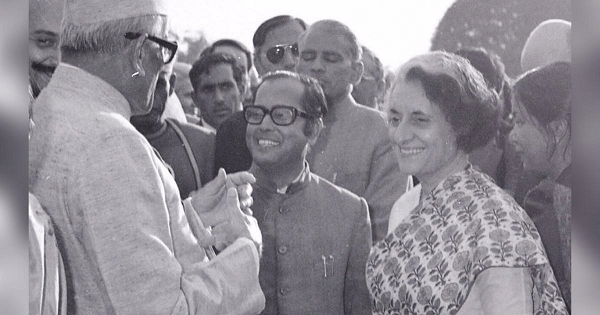
His efforts to strengthen the government's finances throughout his time were notable, and they gave Gandhi the opportunity to make a political statement by returning the final payment on India's maiden IMF loan. Mukherjee, who served as finance minister, put his signature on the document appointing Manmohan Singh to lead the Reserve Bank of India as Governor. Mukherjee was named leader of the House in 1980 after serving as the INC's deputy leader in the Rajya Sabha since 1979. He was regarded as the highest-ranking cabinet minister in India and chaired deliberations of the Cabinet when the Prime Minister was not present. After Indira Gandhi was assassinated, Mukherjee was snubbed in the INC. Mukherjee had a lot more political expertise than Rajiv Gandhi, Indira's son, but Rajiv ultimately took charge. Mukherjee was demoted from the Cabinet and given responsibility for the local West Bengal Pradesh Congress Committee. Due to his support for party members who opposed Rajiv Gandhi, who was seen as Indira's potential replacement, Mukherjee was isolated and subsequently ejected from the core. 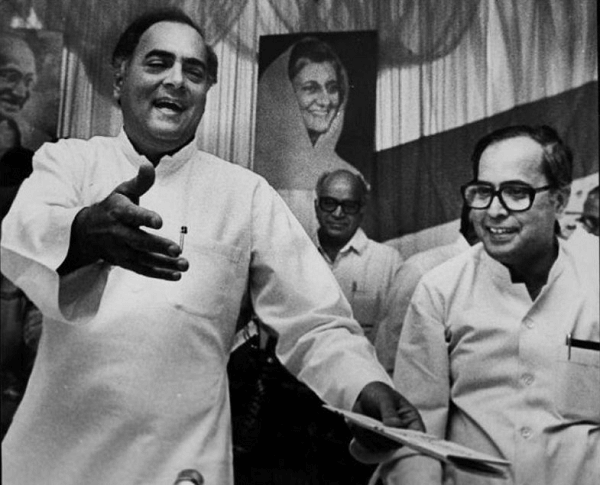
Mukherjee established the Rashtriya Samajwadi Congress (RSC) in West Bengal in 1986. Upon coming to an agreement with Rajiv Gandhi, the RSC and INC were integrated three years later. In West Bengal's 1987 Assembly elections, the RSC had performed appallingly. Over the years, many experts have linked Mukherjee's failure to establish himself as a charismatic public leader as the reason why his political ambitions as the supreme leader were suppressed. Mukherjee responded, "7 Race Course was never his destination," when thereafter questioned if he had ever wanted to be prime minister. After Rajiv Gandhi was assassinated in 1991, Mukherjee's political career was renewed when P. V. Narasimha Rao decided to name him the deputy chairman of the Indian Planning Commission and afterwards as a union member of the Cabinet. In Rao's government, he held the position of External Affairs Minister for the first stint from 1995 -1996. 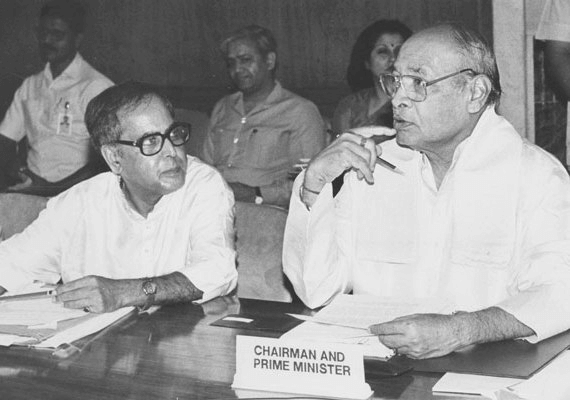
Mukherjee was seen as a steadfast supporter of the Gandhi family and played a key role in helping Sonia Gandhi enter politics; he was also tasked with coaching her. Mukherjee acted as one of Sonia Gandhi's mentors after she unwillingly decided to enter politics. He helped her navigate challenging circumstances by providing instances of how her mother-in-law, Indira Gandhi, would have handled them. When Sonia Gandhi was elected President of the Congress, he was appointed general secretary of the All-India Congress Committee from 1998-1999. 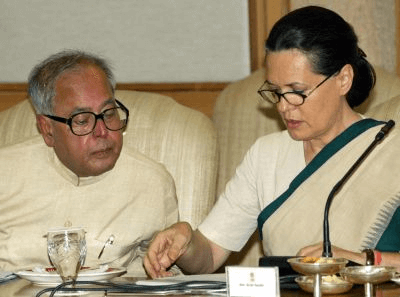
During the 2004 Lok Sabha, Mukherjee was elected Leader of the House. He ran for and secured a Lok Sabha seat from West Bengal's Jangipur, which he subsequently held onto in 2009. In 2004, when Sonia Gandhi refused to serve as prime minister, it was predicted that Mukherjee would be appointed, but Manmohan Singh was ultimately picked. In 2007, Mukherjee's name was temporarily floated for the mostly symbolic position of Indian President, but it was later retracted once it became clear that his service to the Union Cabinet was virtually vital. In the Manmohan Singh administration, he held a number of significant positions. He had the accomplishment of serving as the minister for several prominent departments, notably defence, finance, and external affairs. He was not only the President of the Bengal Pradesh Congress Committee and the Leader of the House in the Lok Sabha, but he also served as the chief of the Congress Parliamentary Party and the Congress Legislative Party, which are made up of all the Congress MPs and MLAs across the nation. 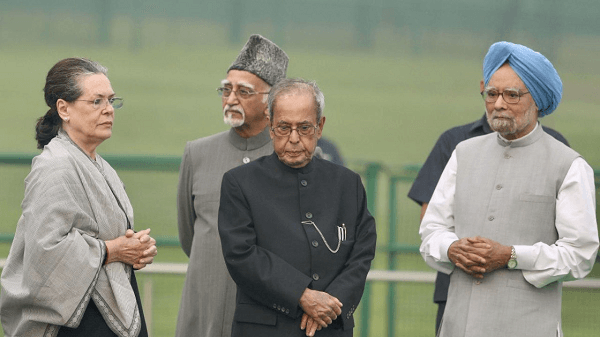
When Prime Minister Manmohan Singh endured heart bypass surgery in 2008-2009, Mukherjee was instrumental in guiding the Cabinet prior to the Lok Sabha elections. Due to his political acumen and extensive government experience, Mukherjee has also been appointed to lead numerous ministerial committees. After his assumption of the President's office in 2012, Mukherjee ceased being a member of the INC and left active politics. Mukherjee presided over a number of Groups of Ministers (GoMs) and Empowered Groups of Ministers (EGoMs) at the time of his renunciation after being selected as the UPA's candidate for President. Contributions as Cabinet MinisterAs Minister of DefenceWhen the Congress Party retook control of the government in 2004, Manmohan Singh selected Mukherjee as the country's minister of defence. Mukherjee served in that capacity till 2006. During his time in office, he increased engagement with the US. Mukherjee also signed the 10-year Indo-US Defence Framework agreement in June 2005. Mukherjee stressed that Russia continued to be India's "topmost" defence ally despite significant ties to the United States. As Minister of External AffairsIn 1995, Mukherjee was named India's Minister of External Affairs. As part of Narasimha Rao's Look East foreign policy, India was elevated to the status of "Full Dialogue Partner" of ASEAN under his supervision. In 1996, Mukherjee resigned from the post. His second tenure started in 2006. Despite India not having ratified the Nuclear Non-Proliferation Treaty, he managed the smooth signing of the U.S.-India Civil Nuclear Agreement with the US government and later with the Nuclear Suppliers Group. Following the 2008 Mumbai Terror attack, Mukherjee was instrumental in influencing public sentiment the world over against Pakistan. A year afterwards, he resigned from the post to lead India's Finance Ministry. As Minister of Commerce and IndustryMukherjee held the position of India's Minister of Commerce three times. His initial employment was with the Indira Gandhi administration from 1980 to 1982 and once more in 1984. He made a substantial contribution to the deliberations that resulted in the World Trade Organization's founding during his third term, which was in the 1990s. As Minister of FinanceIn 1982, under the administration of Indira Gandhi, Mukherjee served his first term as India's finance minister. In 1982-83, he delivered his first annual financial statement. During his first tenure, he worked to strengthen the government's finances and was credited with repaying the final instalment of India's debt from IMF debt. In 1982, Mukherjee authorized Manmohan Singh's appointment to the position of Governor of the Reserve Bank of India. In the Ambani-Wadia industrial disputes, he was alleged to use favouritism. Mukherjee was recognized as a pioneer in Indian economic reforms. In 1984, Rajiv Gandhi sacked Mukherjee from the office of the Finance Ministry. Gandhi had intended to appoint his own people to administer India. Mukherjee was removed despite being named the world's finest finance minister in a Euromoney magazine poll that same year. When Narasimha Rao became India's prime minister, he resumed managing the country's finances after being named the Deputy Chairman of the Planning Commission. Dr Manmohan Singh, who served as finance minister under Mukherjee from 1991 to 1996, led a number of economic reforms that helped eliminate the Licence Raj regime and open of Indian economy. In 2009, Mukherjee was appointed India's Finance Minister once more. The annual budgets for 2009, 2010, and 2011 were delivered by him. The nation's first specific goal to reduce public debt as a percentage of GDP was incorporated in the 2010-11 budget. 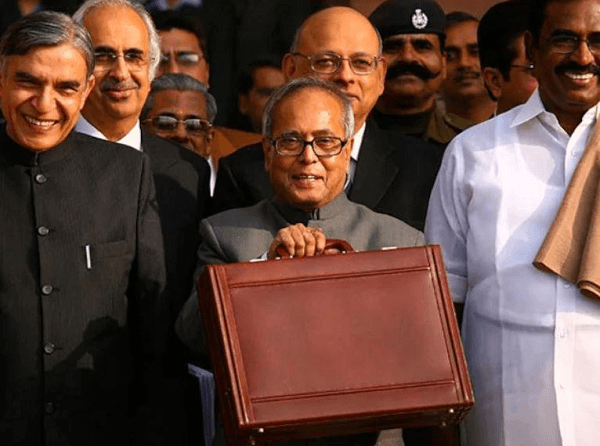
He eliminated the Fringe Benefits Tax and the Commodities Transaction Tax, among other tax measures. Under his term, the Goods and Services Tax was instituted. Large corporate executives and economists welcomed these moves. Although, several economists have questioned the implementation of retrospective taxation. In addition to the Jawaharlal Nehru National Urban Renewal Mission, Mukherjee increased financing for various social sector initiatives. Additionally, he favoured budget increases for bettering healthcare and literacy in the country. He increased the scope of infrastructure initiatives like the National Highway Development Program. Under his tenure, the availability of electricity was also extended. As several economists voiced alarm over the mounting budget deficits during his tenure-the largest since 1991-Mukherjee also maintained his adherence to the idea of fiscal discipline. The increase in government spending, according to Mukherjee, was purely transient. The daily newspaper of record for the World Bank and IMF, Emerging Markets, named him "Finance Minister of the Year for Asia" in 2010. Mukherjee was hailed for "instilling confidence in major stakeholders" through his plans for inclusive growth, budgetary openness, and fuel pricing reductions. He was also honoured as "Finance Minister of the Year" by The Banker. The final years of Mukherjee's tenure as finance minister were not seen favourably since he was criticized for a number of judgments in which politics appeared to have prevailed over economic need. Mukherjee, as President of IndiaFollowing plenty of political machinations, Mukherjee was named the UPA's presidential candidate on June 15, 2012. P. A. Sangma was the NDA's candidate. Mukherjee left the ministry on June 26, 2012, in order to submit his candidature for the June 28 presidential election. Mukherjee garnered more than twice as many votes as Sangma did in the election. The Chief Justice of India administered Mukherjee's oath of office on July 25, 2012, making him the country's first Bengali President. Most leaders, including those from the opposing parties, welcomed Mukherjee to becoming President of India. On February 3, 2013, Pranab Mukherjee signed the Criminal Law (Change) Ordinance, 2013, which provided for the amendment of the Indian Penal Code, Indian Evidence Act, and the Code of Criminal Procedure 1973 on legislation relating to sexual offences. President Mukherjee turned down 24 requests for compassion during his time in office, such as those of Yakub Memon, Ajmal Kasab, and Afzal Guru. In his stint as President, Pranab Mukherjee became the first Indian President to respond to every mercy petition on behalf of people on death row as well as petitions of former Presidents. Mukherjee declared in January 2017 that he would not run for the presidency in 2017 and cited his advanced age and deteriorating health for it. Awards and HonoursThroughout his whole political career, Mukherjee has received a number of significant honours, including the second-highest civilian award in India, the Padma Vibhushan, in 2008 and the highest civilian award, Bharat Ratna, in 2019. 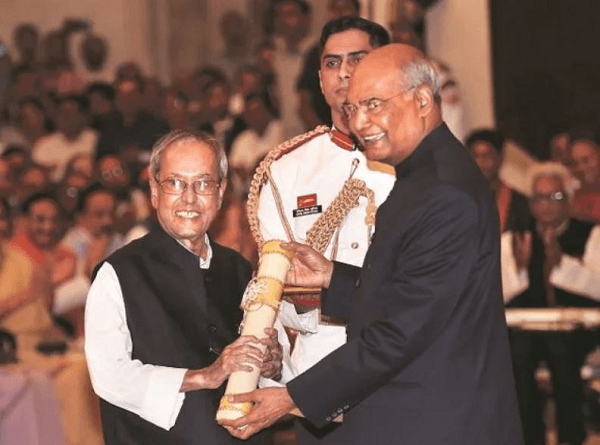
Among foreign honours, in 2013, the Bangladesh government awarded him the Bangladesh Liberation War Honour. Literary WorkOver the course of his political journey, Mukherjee wrote several books. The most notable of them are: Congress and the Making of the Indian Nation The Turbulent Years: 1980-1996 The Coalition Years: 1996-2012 The Presidential Years: 2012-2017 DeathOn August 10, 2020, during the COVID-19 outbreak, Mukherjee tweeted that he had tested positive for the virus before undergoing surgery to remove a blood clot from his brain. After unintentionally tripping and sliding in his bathroom, he was sent to the hospital. At the Army's Research and Referral (R&R) facility in Delhi, he was critically ill and receiving ventilator assistance. Mukherjee had undergone brain surgery, and the hospital stated on August 13 that he had been in a deep coma, although his vital signs were stable. Mukherjee passed away on August 31, 2020, at the age of 84, from septic shock induced by a lung infection, which his son Abhijit Mukherjee verified via Twitter. Political parties and individuals in India and other countries swiftly expressed their grief. The cremation of Mukherjee took place at the Lodhi Road crematorium the next day, on September 1, with complete state honours. The Indian government declared a 7-day period of state mourning during which all buildings where the national flag is normally hoisted will fly at half-mast. As a gesture of respect, the West Bengal state administration announced the closure of all government institutions the next day.
Next TopicRaja Rammohan Roy
|
 For Videos Join Our Youtube Channel: Join Now
For Videos Join Our Youtube Channel: Join Now
Feedback
- Send your Feedback to [email protected]
Help Others, Please Share









